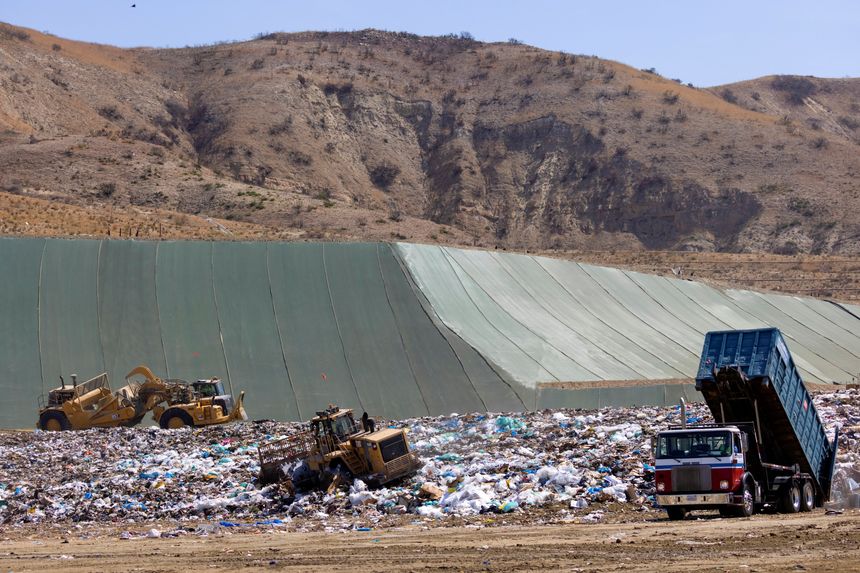Workers use heavy machinery to move trash and waste at the Frank R. Bowerman landfill on Irvine, Calif., June 15, 2021.
Photo:
MIKE BLAKE/REUTERS
At the end of the 1985 film “Back to the Future,” the shambolic Doc Brown swoops in from the future—that is, 2015—to pick up his partner,
Marty McFly,
in a DeLorean fueled by trash. In 2022 trash-powered vehicles still sound like science fiction, but a technology revolution may be turning them into a reality. Hidden amid the carefully striated layers of waste at the local landfill is a potent energy source: methane gas.
Methane has a lot of potential, but it can also do a lot of harm. When it isn’t transmuted into something else, methane is an extremely strong pollutant, 82 times as potent as carbon dioxide. For years, landfill operators had to resort to burning it from atop a tall metal minaret called a flare, resulting in tons of wasted potential energy.
In a lesson about how the energy transition is likely to play out, landfill operators’ ability to make use of excess gas has exploded in recent years. New facilities are being created to convert trash into renewable natural gas, molecularly identical to the gas that heats homes. The process cuts down greenhouse-gas emissions while creating a low-carbon energy source, and it supports energy independence by opening up vast quantities of previously untapped fuel.
The potential has spurred major sanitation and energy companies to break into this new market. This year Houston’s Waste Management Corp. announced an $825 million investment to boost renewable natural-gas capture. In October the British company
agreed to acquire
(which one of us founded and the other invested in), a company that designs, builds and operates RNG plants in the U.S. to convert waste emissions. Archaea produces 6,000 oil-equivalent barrels a day through 13 RNG facilities with plans to construct 88 more to serve rising demand. Our…
Click Here to Read the Full Original Article at RSSOpinion…

